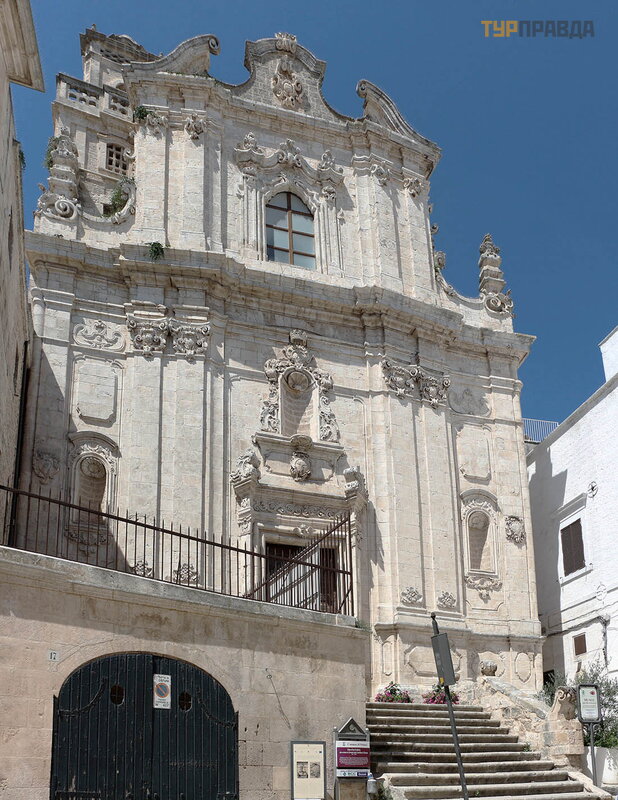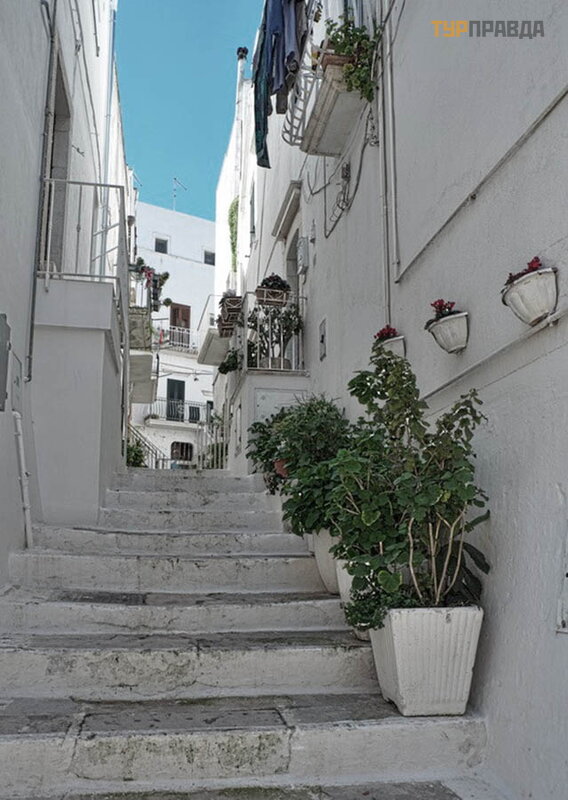Puglia and a bit of Rome. Part 7 (continued). Ostuni

To be continued. Start here >>>
Something yesterday I missed Ostuni, where we visited with a tour a year ago.
From Gallipoli to Ostuni not far, 20 minutes by train. But the station is far from the city, about three kilometers, it’s good that we then had a bus tour.
Ostuni is called "the white city", "the white lady of Italy" because of the white color of its buildings. This is clearly visible from afar.
During the Angevin dynasty (until the 15th century), the city acquired the appearance of a fortress: protective walls with towers, and inside the houses, connected to each other and ascending upwards to the top.
We drove up to the fortress walls, now the walls and towers of the apartments of local residents.
The territory of Ostuni was inhabited in the ancient Paleolithic, 50.000 years ago. In the area, archaeologists have even found the body of a woman in her last month of pregnancy,
which is about 24.000 years old. She was given the name Delia (Delia), and she became a unique discovery on a global scale.
City center - Freedom Square (Piazza della Libertà ). Here is the Palace of City Administration (Palazzo del Comune), originally a Franciscan monastery. Also on the square, as in Lecce, rises the Spire of St. Oronzo (Guglia di Sant'Oronzo) in 1771, along with the patron saint, who keeps and protects the city from troubles.
When the plague raged around, it bypassed Ostuni! Perhaps the fact is that the lime, with which the inhabitants whitewashed their houses, helped, quite effective disinfection. It was then, in the 17th century, that Ostuni acquired its trademark white color and the glory of the "White City".
Nearby is the municipality and Chiesa dello Spirito Santo (Church of the Holy Spirit, 1637), a portal with a 15th-century bas-relief in late Gothic style.
In the oldest part of the city, on top of a hill,
there is a cathedral of the 15th century - Basilica Minore Concaffedrale di Santa Maria Assunta (1435-1495), built in the late Gothic style. Its facade is decorated with portals with a large central rosette, decorated with the figure of Christ surrounded by the apostles, who holds the earth in his hands as a sign of his patronage.
The interior was rebuilt in the 18th century:
The ceiling is painted with scenes from the life of Jesus.
Next to the cathedral, the Bishop's Palace and the old seminary, connected by an arch. Both buildings are from the 18th century:
On Via Cattedrale, there is the Rococo church of St. Vito Martire (Chiesa di San Vito Martire), attached to the Carmelite monastery. Built in the middle of the 18th century, it has a curved faç ade and a tiled dome.
The monastery now houses the Museum of Prehistoric Civilizations, where the remains of the same prehistoric woman Delia are kept.
Wedding in the Church of St. Francis (Chiesa di San Francesco):
The old city, which the locals call "La Terra", is protected by walls and Aragonese towers (there are eight authentic), it has the shape of an ellipse that has formed around Cathedral Street, which rises up the hill to the top, crossed by lanes, stairs and intricate aisles.
Our women love to be photographed in a pose from the "Diamond Arm":
The sea is five kilometers from the city, it can be seen from the wall:
That's the whole story about the "White City" Ostuni.
Continued here >>>











































